With a little luck, the drive through Arran’s mountainous northern half on the way to Lochranza might yield an eagle spotting or two. White-tailed eagles are known to cruise the currents sweeping over the bald hills and forested glens, and they’re also a key element of The Arran Malt’s brand image.
It’s a fitting symbol.
I recall noise a few years back about how The Arran Malt was “lackluster” and “not yet ready” for serious consideration. On my last trip to Scotland, I decided to spend some time on Arran and pop into the Isle of Arran Distillery to make up my own mind. What I found happily flew counter to all those stale rumblings. Let’s talk whisky.
The Isle of Arran Distillery is a handful of white buildings with peaked, gray roofs clustered at the mouth of a Glen Chalmadale. I arrived on a clear September morning as sun slanted on the tall hills surrounding the beautiful glen, and Campbell Laing, the distillery’s head guide, actually met me in front of the visitor’s center decked out in a fantastic blue and green kilt. Campbell had retired to Arran after years in Glasgow, and he turned out to be one of the warmest people I met on my Dalriadan odyssey.
While there has been plenty of moonshining in Arran’s past, the Isle of Arran Distillery is only 16 years old. Harold Currie, the former director of Chivas, founded the distillery, and perhaps this lineage explains The Arran Malt’s curiously Speyside style.
Campbell leads me through the visitor’s center with its unique water feature and open concept, the entrance to a faux croft, and through a “smuggler’s cave” en route to the gift shop. It’s the coolest and most produced visitor’s center of any distillery I’ve visited (28 and counting). The distillery fits in one compact building. All of the mashing, fermenting, and distilling happens in a single, perfectly organized room with massive windows and a very high ceiling crowned with a signature pagoda. Best cubicle ever. I’m reminded of the Benromach’s compact operation, but this is even more orderly, clean, and new. There’s even room for expansion, something other distilleries generally lack.
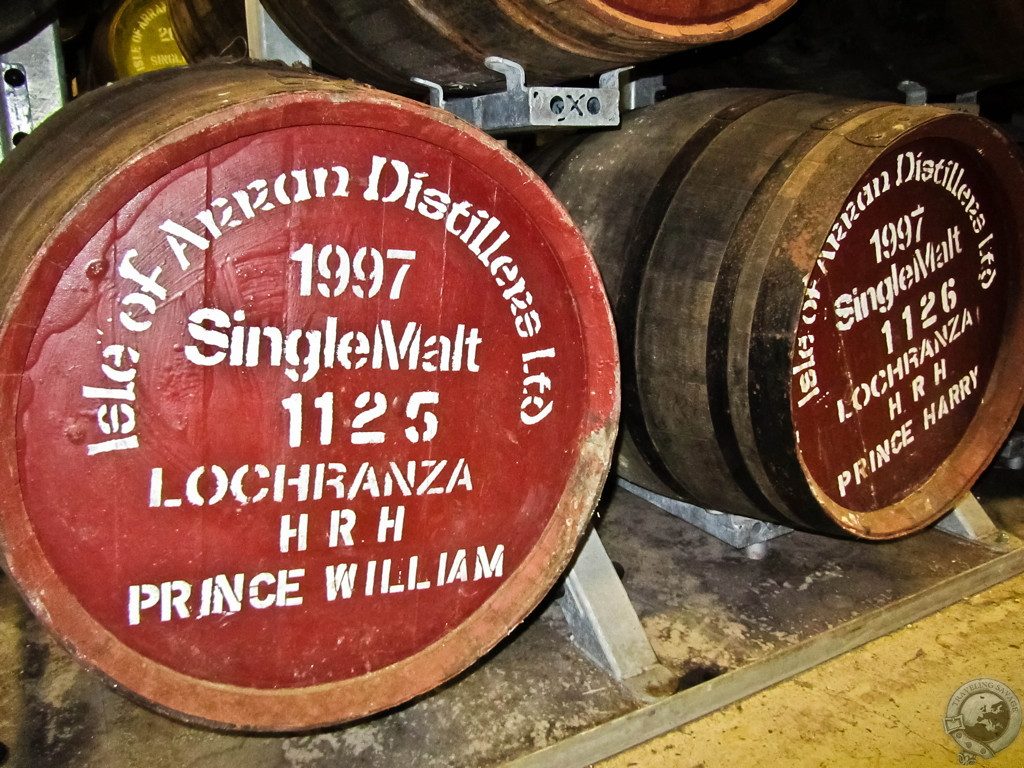
Being a new distillery, it’s a small place. Two stills, handcrafted for the distillery, run 24 hours per day six days a week to produce over 300,000 liters each year. It’s more than double the production they started at 16 years ago, but less than half of what they can do. Campbell points out that the stills were designed to replicate the stills at Macallan. It’s a huge clue for what I can expect during the tasting later. James MacTaggart, the distillery manager who spent 30 years with Bowmore, stops by to say hello as I’m admiring the stills.
In the warehouse, Campbell is quick to show me their state of the art racking system. Barrels stretch to the ceiling in staggered positions so that a small forklift can bring them down without needing to move or upset any nearby barrels. Given the legal hurdles surrounding the expansion of liquor warehouses, I imagine this type of system will be seeing more use elsewhere in Scotland. I appreciate that all of The Arran Malt is aged on site; it’s just another element of capturing a region’s terroir. I pass a few barrels with famous names: Ewan MacGregor, Prince William, Prince Harry. The distillery provides a cask ownership system, and with 10-20 interested people it can be an affordable, wise, and lucrative investment.
We’re about to return to the visitor’s center when Campbell takes me on a detour past a livestock gate, over a field, and along a path to the distillery’s water source. He dips a small jug into the stream and hands it to me. I take a quick gulp of the water, and it’s pure and clean. That’s how it runs off the hills and finds its way into the distillery.
Back in the visitor’s center, Campbell sets two very different drams in front of me: their new core 14 year old and Arran Gold, their whisky liqueur. The nose on the 14 year old is very sweet with honey, vanilla, and some spices like cardamom and cinnamon. The mouthfeel is thick and wonderful with flavors of honey, spice, and a hint of licorice. I remember Campbell said it’s aged in both Bourbon and Sherry casks, and the perfect balance between the woods yields all the signature flavors from each. The non-chill-filtering of the whisky is responsible for the mouthfeel and the alcoholic burn/kick. Not a hint of smoke can be found – Speyside indeed.
The Arran Gold is ambrosia. Creamy sweetness rounds off the Arran Malt at the heart. It’s a dangerous taste for anyone because you’ll simple want more, and at a low 17% ABV it’s just too easy to drink. I forced myself to avoid the gift shop after this taste.
Campbell wouldn’t let me go without a taste of their new Machrie Moor bottling. It comes in stunning packaging (as do all of their products) and represents their peated whisky. At only six years old, it’s a young one, but the only clue is a bit of extra burn on the finish. It’s a nice smokey dram that doesn’t beat you over the head with phenols; the rest of The Arran Malt’s characteristics are there in balance. Grab a bottle if you can find it.
New distilleries typically offer vast arrays of bottlings and the Isle of Arran Distillery is no different. They offer standard age statements, blends like Robert Burns and Lochranza, finishes, single casks, one-offs, cask strengths, and yearly collectible bottlings. Some of these whiskies will make it out of the nest, some won’t. And some are already soaring high above the rest like those white-tailed eagles on their logo.

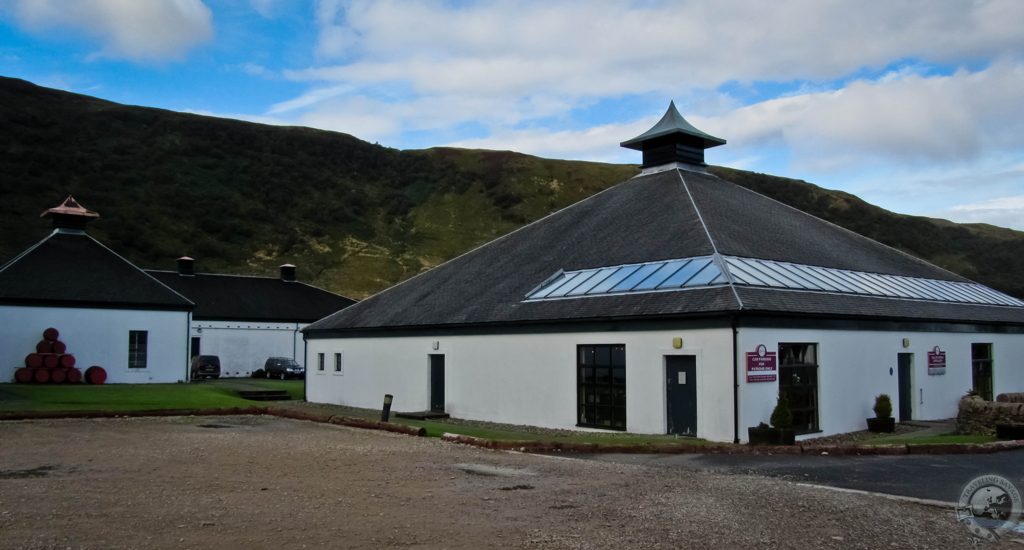
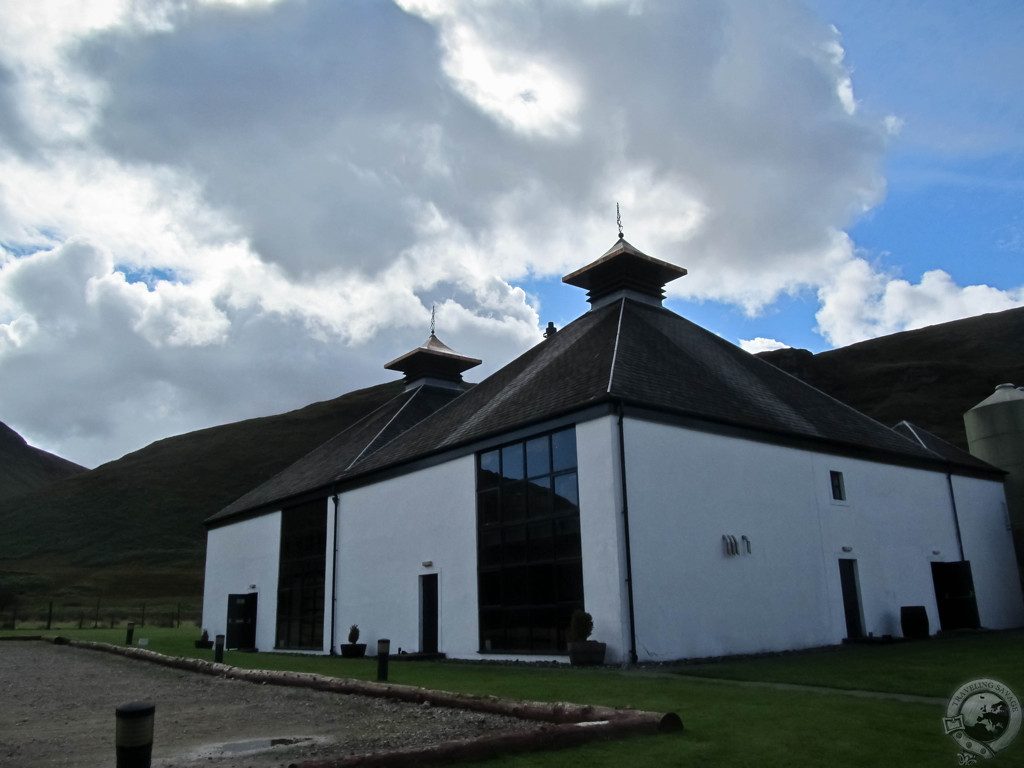
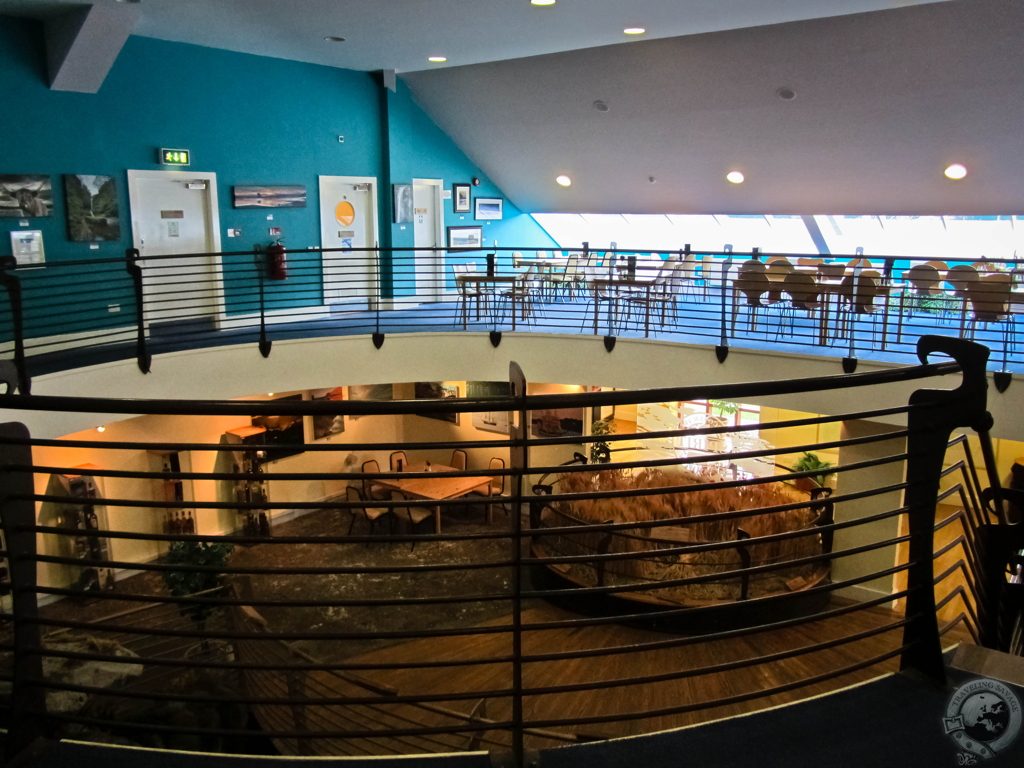
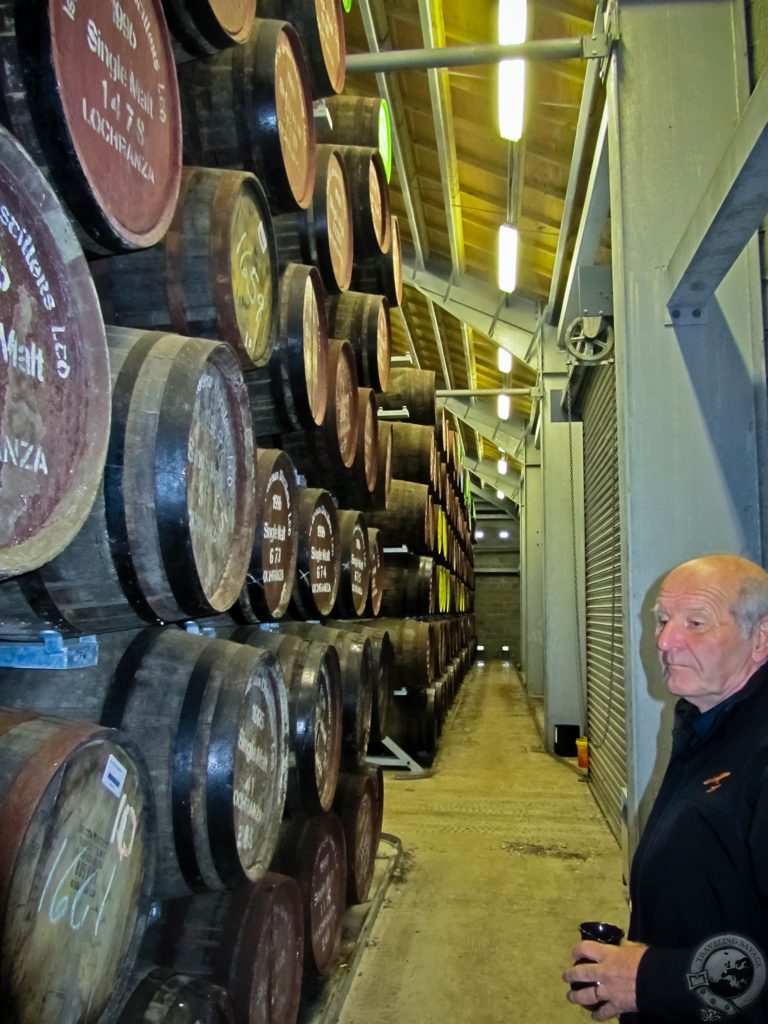
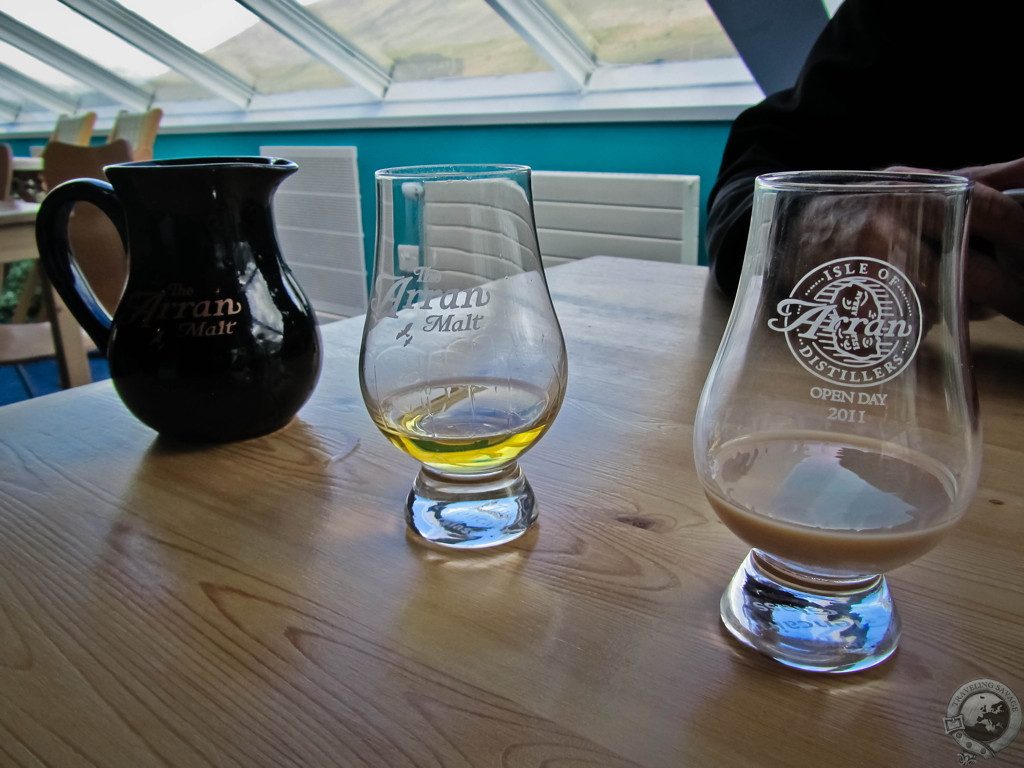
God. Want some. My next visit to Scotland is into multiple weeks already. Can I do it? The islands, borders, John O’ Groats, Orkney and Speyside (again). Another stop at Edradour would be sweet, too. If the dollar would get better, I could stay for a while. I really miss those Loch Fyne kippers and Arbroath smokies.
You can do it, just depends on how much time and money you have at your disposal. The islands always add on a lot of time and expense.
oh my. echo ken, i want some!!
That is so cool, i wonder how much a barrel would cost. One day I must make a trek there to try some food and drink. Have never done fishing, so that is another reason other then whisky 🙂
I couldn’t get a price per barrel, but I remember Campbell saying it was pretty affordable with 20 people. That barrel can turn into 300+ bottles. That could be 15 bottles of one of a kind single cask whisky for a fraction of what it would cost you buy it on the market. Or, you could just sell your “shares” in the barrel later to make a profit.